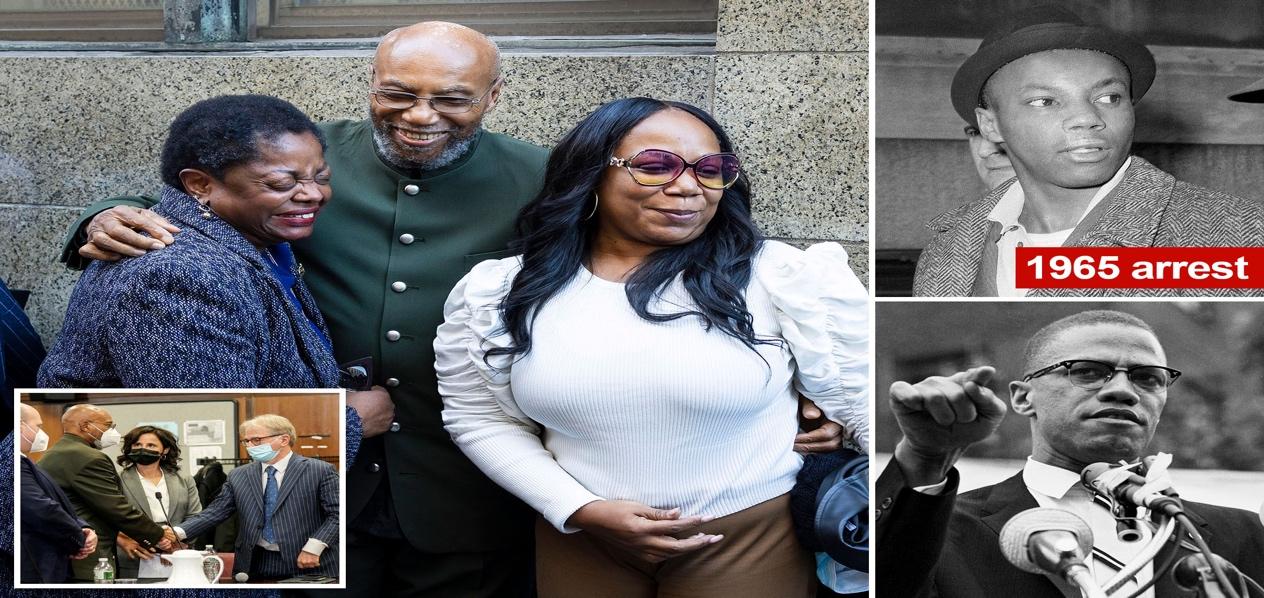
Former Manhattan District Attorney Cyrus Vance has now cleared Muhammad Aziz and Khalil Islam who were wrongfully convicted of Malcolm’s 1965 murder.
Vance and other government authorities, however, refused to investigate the FBI, NYPD, CIA, and other government agencies for their role in his killing.
[This article is part of CAM’s political assassination series and follows from our updated investigations into the life and death of civil rights icon Malcolm X and Martin Luther King, Jr.—Editors]
In recent months, the corporate media have made much of the exoneration of two members of the Nation of Islam (NOI) previously convicted of assassinating Malcolm X. After spending many years in jail, Muhammad A. Aziz (Norman Butler) and Khalil Islam (Thomas Johnson-now deceased) were cleared of the previous conviction upon the intervention of the Manhattan District Attorney, Cyrus Vance, Jr., at the behest of lawyers from the Innocence Project.
Recent scholarship has identified others for the murder, although none of these suspects is still alive. The judge vacated the convictions after DA Vance acknowledged that authorities had not revealed to the defense exculpatory material in the hands of the FBI and the police.[1]
Vance concluded in his comments to the court that the bulk of these materials cannot now be found and no longer exist. Government officials and the corporate media have made no concerted effort to find out whether the records are merely lost but discoverable. Have they in fact been destroyed?
Is this merely bureaucratic inertia or were specific orders given to prevent the material from ever becoming exposed? We are left with the undisputed fact that members of the NOI killed Malcolm X after an extended period of growing alienation and antagonism between Malcolm and the higher-ups in the NOI.
But we also know that Malcolm X was the target of a government campaign to discredit and destroy him and that the FBI and NYPD had infiltrated the NOI as part of a strategy of exploiting divisions within it and to fulfill their goal of destroying the radical Black movement by having its “Black Messiah” killed.
This is something that Malcolm himself understood—but which government authorities today are still unwilling to acknowledge, even as they exonerate those wrongfully convicted for Malcolm’s death.
Was Malcolm X More Than a Civil Rights Leader?
Malcolm X was one of the most important Black leaders of the 20th century. It was primarily through Malcolm X that the radical tradition of Pan-African internationalism returned to the mainstream of the struggle for Black Liberation in the 1960s. Malcolm X was a thinker and a theoretician of Black liberation. A skillful organizer and propagandist, Malcolm X sought the answers to important questions which remain to be answered if the struggle for Black liberation is to be rebuilt in the opening decades of the 21st century.
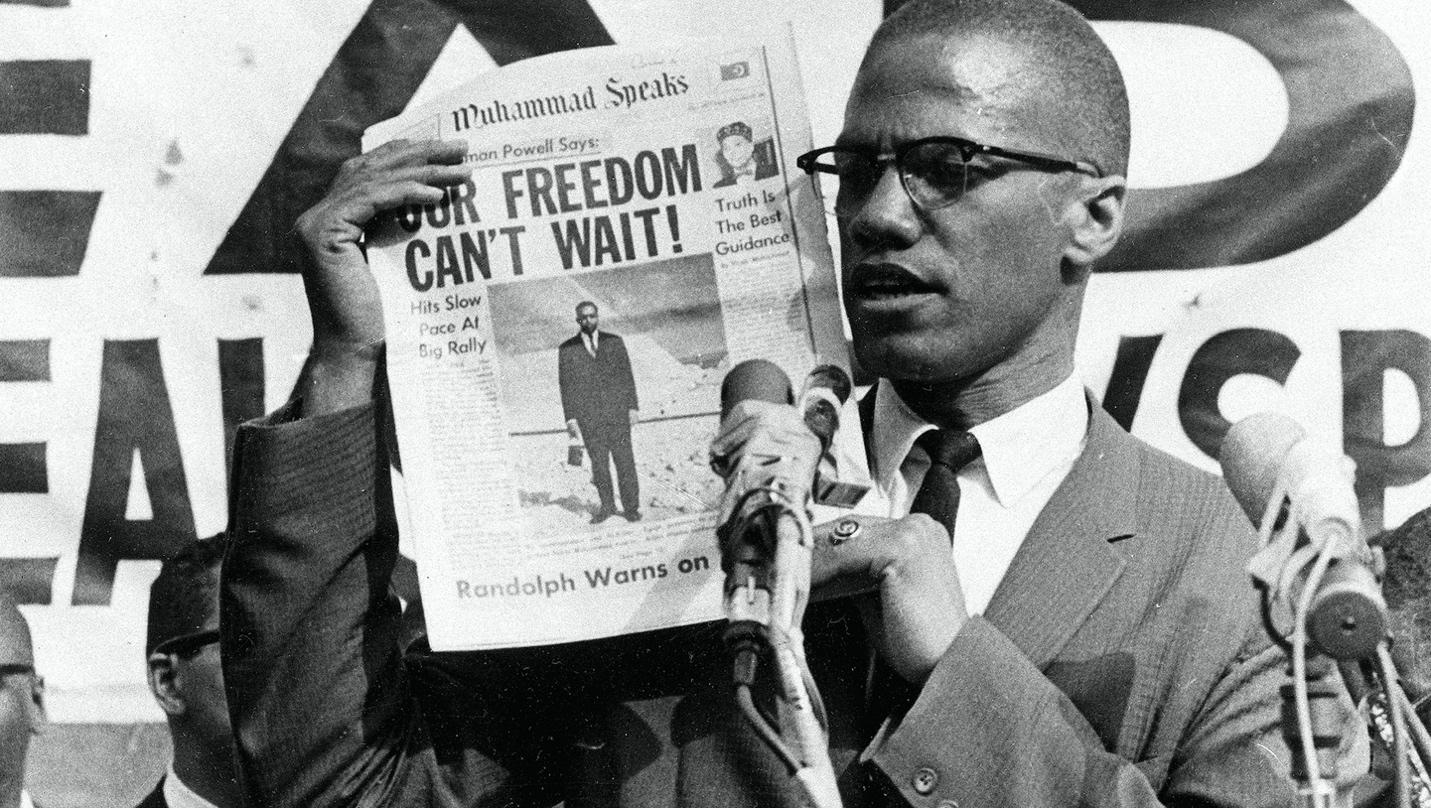
What were some of the political questions that confronted Malcolm X in the last months of his life? First, who exactly were the enemies of Black liberation?
Malcolm’s answer: a racist, Euro-American imperialism operating internationally under the aegis of NATO. How was that enemy to be defeated? Malcolm’s answer: by the construction of a grand alliance of the world’s dispossessed people of color to which African-Americans would affiliate through the Organization of Afro-American Unity, conceived as a regional affiliate of the Organization of African Unity (OAU).
To do this, Malcolm X asserted that the Black freedom struggle was a human rights movement, not a civil rights movement, a national liberation struggle entitled to international recognition and protection under international law.
Malcolm X was particularly sensitive to the question of Zionism because 1959 was the year of his first trip to the Arab World and East Jerusalem. He established direct and lasting contacts with Muslim leadership there.
He received Arab activists and Muslim scholars from the East at New York’s Mosque Number 7 for the remainder of his sojourn in the NOI. In 1964 Malcolm returned to the Arab World, not only making Hajj but travelling to Egypt, Saudi Arabia and Gaza and publicly taking up the cause of Palestinian liberation and anti-Israeli imperialist expansion.

On that same trip, he spent time with African revolutionaries in Tanzania, Ghana, and Egypt where he received a deeper briefing on the relationship between Zionism and Western imperialist interests.
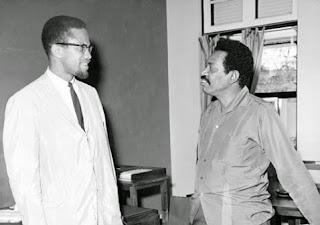
Malcolm X was a staunch opponent of Zionism. He famously polemicized against it in “Zionist Logic,” an article published in The Egyptian Gazette in 1964.[2] In the document, Malcolm X noted the parallels between the subjugation of Palestinians and Africans.
He pointed out the strategic value of Israel to world imperialism, “The ever-scheming European imperialists wisely placed Israel where she could geographically divide the Arab world, infiltrate and sow the seed of dissension among African leaders and also divide the Africans against the Asians.”
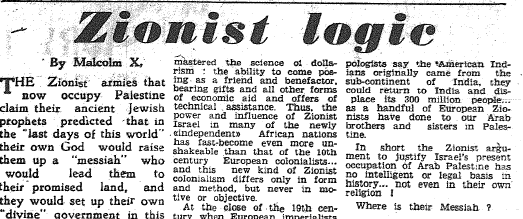
Malcolm X Was a Pan-African Internationalist Human Rights Leader
Malcolm X helped shift the focus of Black struggle away from Civil Rights assimilation toward Black Liberation.
He strove to give the African-American an international personality as a legitimate liberation movement. To do this he had to forge solid links with the anti-colonial and anti-imperialist forces in the international arena. He received his strongest support from leadership based in the “Casablanca” axis which itself was firmly based on Afro-Arab solidarity.
Through their efforts, he was accorded diplomatic status at the OAU Heads of State Summit Conference in Cairo in July 1964 and was able to present a memorandum to that body which presented a clear alternative assessment of the condition of African-Americans compared to the United States government’s position.
He was also able to garner support for his idea of going to the United Nations and the World Court to indict the United States Government for violations of international law in its treatment of African-Americans. Although many countries which privately supported Malcolm were fearful of publicly following up on their commitments to help him in the face of the unquestioned power of the United States, his activities in Africa were a game changer.
The most useful aspect of Malcolm X’s two trips to Africa in 1964 was that the leadership and masses of that continent were notified that there were other opinions and analysis of the U.S. racial situation than those spread by the United States Information Agency (USIA). Malcolm X was successful in establishing his analysis as that against which subsequent spokespersons and USIA releases were judged in Africa.
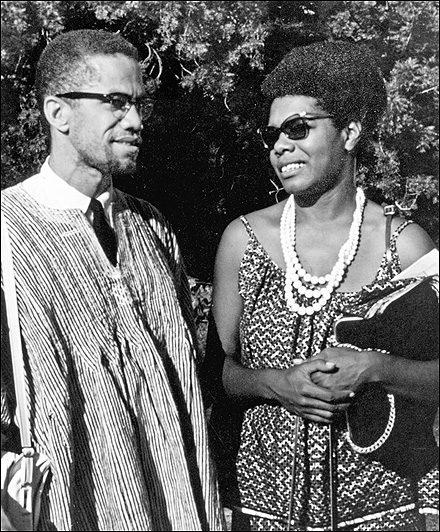
As the Student Nonviolent Coordinating Committee (SNCC), the left wing of the civil rights movement, would also do later, Malcolm shifted the Black conceptual framework in ways favorable to Palestinian self-determination and opposition to the Zionist Project. The Organization of Afro-American Unity (OAAU) concept on the domestic front emphasized Black collective self-defense against racist violence and independent Black politics outside of the framework of the two-party duopoly. The OAAU was an organization founded by Malcolm whose purpose was to to fight for African-American human rights and promote solidarity with African anticolonial movements.
Why Was Malcolm X an Enemy of the State?
The emergence and growth of the American security state paralleled the development of the Black Freedom struggle in the 20th century.
As the excesses of late capitalism fueled the development of industrial unionism, labor radicalism, and truly revolutionary activity, the nascent security state increasingly saw Black militancy as part and parcel of an alien presence which must be extirpated from the American body politic.
Led for decades by J. Edgar Hoover, the activities of the FBI grew in scope and sophistication in direct proportion to the maturation of the Black Freedom struggle into a mass movement which could potentially threaten the perpetuation of the capitalist order.
In the 20th century, whenever Black radicals of whatever stripe made important gains in the organization of the mass of Black people around a freedom agenda, the FBI under Hoover moved to monitor, infiltrate and repress the Black movement. Using “dirty tricks,” Hoover would sow discord and internecine conflict leading to the discrediting and death of Black leadership.
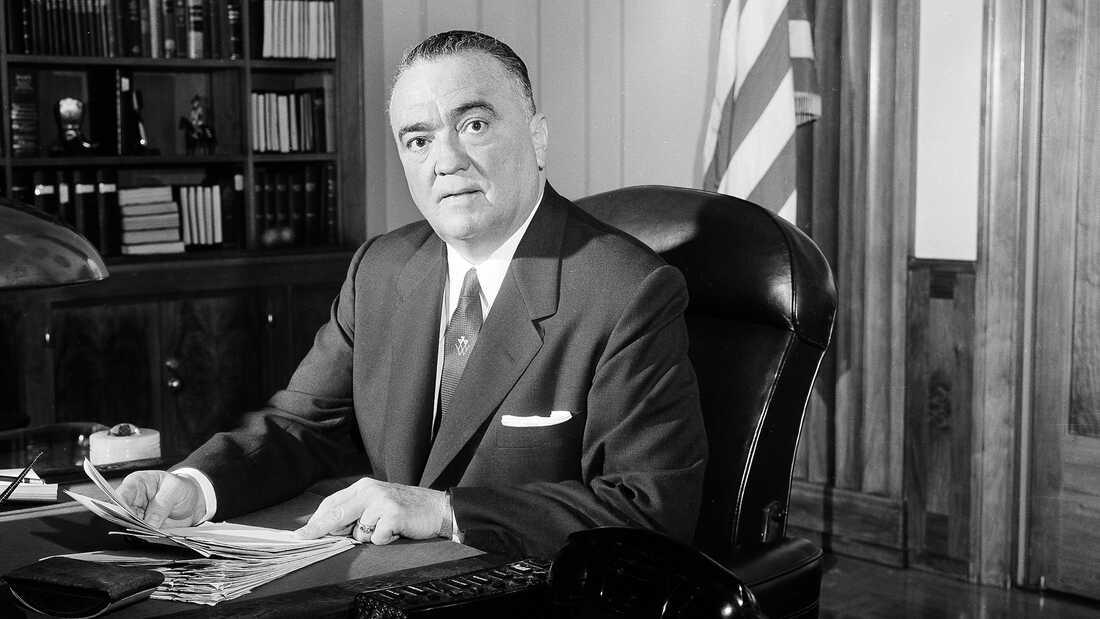
Les Payne, in his seminal work on Malcolm X, summed up this process as it played out in its initial manifestation against Marcus Garvey and W.E.B. Du Bois:
With fixed intentions of exploiting existing divisions within the Black community and stimulating others, J. Edgar Hoover drew up a plan that, on the one hand sought to destabilize Du Bois’s group efforts against segregation and, on the other, aimed to thwart all attempts by Garvey’s UNIA to empower Negroes by other means.[3]
Payne goes on to note the parallels and the central role of the FBI in stoking conflict between the NAACP and Garvey. This tactic brought Garvey down, goaded the post-World War II mainstream Negro leadership to alienate and attack Du Bois and Robeson and, lastly, was the catalyst which brought the rivalry between the NOI and Malcolm to a murderous conclusion.
Garvey and Du Bois were ultimately taken down by a direct and ostensibly legal prosecution by the State. Such might also have been the fate of Malcolm X save the assassin’s bullet obviated the necessity of a legal smokescreen.[4]
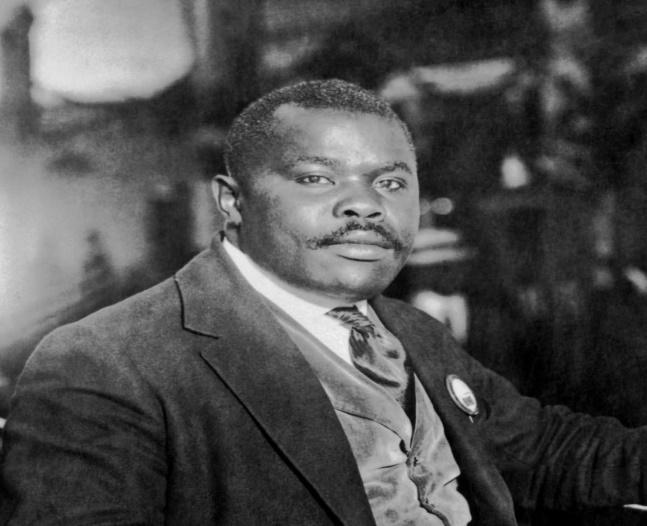
Marcus Garvey [Source: biography.com] 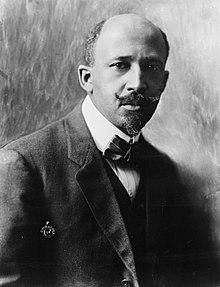
W.E.B Du Bois [Source: wikipedia.org]
Was There a Program Initiated by the Security State to Discredit Malcolm X and Destroy the OAAU?
J. Edgar Hoover initiated the FBI program of destruction of the OAAU in a memo to the New York and Philadelphia field offices dated July 2, 1964. In it, he said in part:
There is indication that Little [Malcolm X] has aligned himself with subversive groups and this matter must be immediately investigated and, if feasible, a counterintelligence program will be initiated to publicly discredit Little. [5]
The antagonistic scrutiny of Malcolm X and the OAAU by local and federal security branches of government was an extension of monitoring first directed at the NOI during World War II. It was part of an even earlier trend to ferret out popular Black leadership and movements which had the potential for a mass-based movement of Black nationalism or more generally of Black equality.
A young J. Edgar Hoover moved successfully to destroy the Universal Negro Improvement Association (UNIA) and discredit the leadership of Marcus Garvey. During World War II, Hoover kept a file on Black organizations which he monitored with reference to communism and German, Italian and Japanese fifth columnists.[6]
The Justice Department in 1942 charged Elijah Muhammad with sedition because of his alleged identification with the “pan colored” propaganda of the Japanese and his contact with an agent of that government sent to secure allies in the Black community.[7]

Elijah Muhammad spent several years in jail as a result of his refusal to be drafted into the wartime armed forces. As an important functionary of the Nation of Islam, Malcolm X had been the subject of FBI surveillance since 1952.
With other members of the Nation of Islam, Malcolm X‘s name had been added to the FBI’s security index. The FBI opened its surveillance file on Malcolm X because of statements attributed to him in prison in 1952 in which he allegedly stated that he was a communist.
Was the Takedown of Malcolm X a Trial Run for COINTELPRO?
Prior to the COINTELPRO program, the FBI had a major rationalization for investigation and disruption of movements like Malcolm X’s. The FBI carried out extensive surveillance of the Civil Rights Movement and its offshoots through its Communist Infiltration Program, COMINFIL.
In March 1956 Hoover reported to an Eisenhower cabinet meeting that the Black Muslims was one of the “organizations presently advancing integration [sic]” and “figuring in the rising racial tensions.”[8] The NOI was described as a group which used “violently anti-white rhetoric” and expressed support for the Mau Mau in Kenya and the Vietminh of North Vietnam.[9]
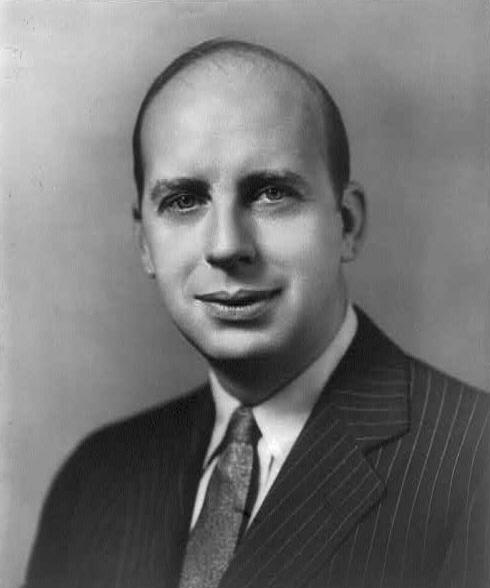
Kenneth O’Reilly reported that the FBI tried to have the NOI put on the attorney general’s list of subversive organizations and jail its leaders for Smith Act and Selective Service violations. However, Attorney General Herbert Brownell, Jr., refused. Nevertheless, he approved wiretaps which became the basis of widespread monitoring of Muslims.[10]
Later during the OAAU period, the FBI investigated Malcolm X because of his association with individuals who had alleged Communist Party links or had been previously put on the FBI’s Security Index.
Thus, the OAAU came in for immediate scrutiny because of Malcolm X’s association on his first trip to Ghana with Julian Mayfield, who was already on the FBI’s Security Index.

The initial interest and support of the Socialist Workers Party, the extensive coverage he received in that party’s newspaper, The Militant, and the frequent reports of Socialist Workers Party leadership’s attendance at the OAAU rallies created a certainty within the FBI that Malcolm X was engaged in a subversive enterprise.
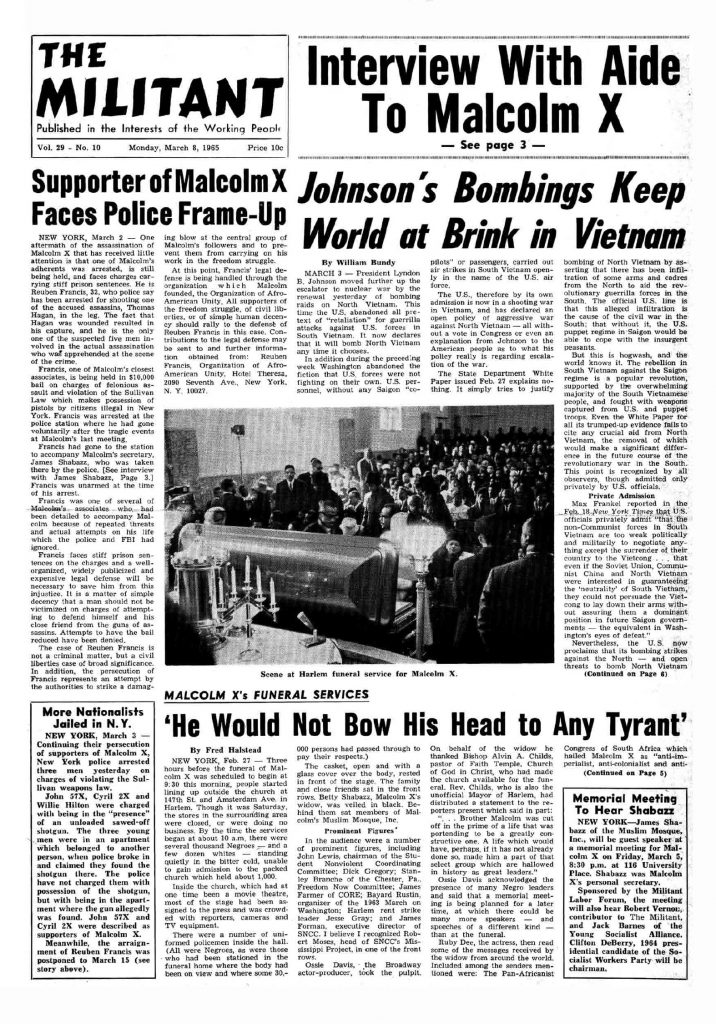
Other supporters of Malcolm X had significant leftist backgrounds which triggered the paranoia of the FBI. Prominent among the guests at the initial rally of the OAAU were people like William Epton, former Harlem branch member of the Communist Party and at that time a member of the Progressive Labor Party, Conrad Lynn, a lawyer with a reputation for defending leftist causes, and intellectuals like John Oliver Killens.

William Epton [Source: wikipedia.org] 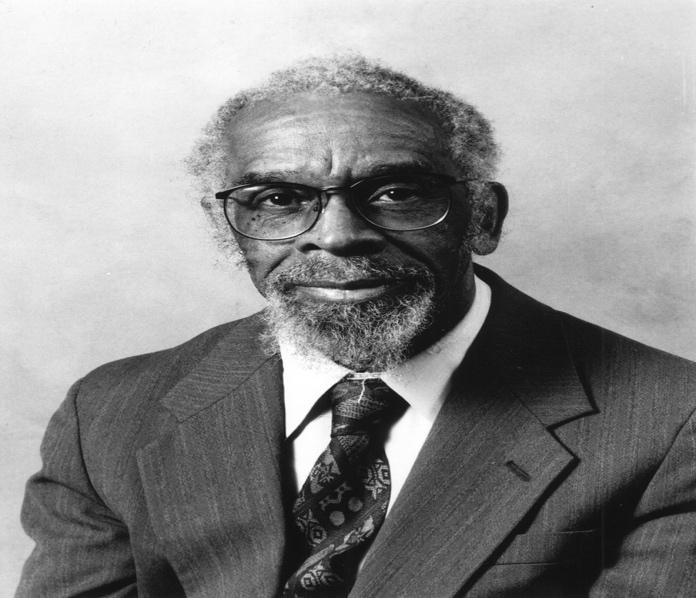
Conrad Lynn [Source: wikipedia.org]
They were suspected because of association with, or previous memberships in, organizations designated as communist fronts. In fact, not long before the assassination, the FBI anticipated that a real possibility existed that they might be able to indict Malcolm X for his “subversive activities.”[11]
Ironically, the FBI also had solid information that the Communist Party was in no way aligned with or encouraging Malcolm X. In an FBI report based on its surveillance of the Communist Party, an informant reported on the New York District meeting of the CPUSA at the Hotel Woodstock on March 16, 1964. In commenting on Malcolm’s break with Elijah Muhammad and his new organizational efforts, several speakers worried about Malcom X’s ideas concerning violence and expressed the opinion that he was hurting the integrationist program.
The Security State Even in Malcolm’s Time Was Bigger and Broader Than Hoover and the FBI
“Dirty tricks” had been initiated against Malcolm X and the Muslim Mosque, Inc., by the FBI.
As indicated in the outline of a plan contained in a memo from the Special Agent in Charge (SAC) in Detroit to Hoover, dated April 10, 1964, a phony letter was drafted over Malcolm’s signature and sent to Muhammad’s followers in Detroit to cause “disruption and deeper disputes between Nation of Islam leader Elijah Muhammad and Malcolm Little of Muslim Mosque, Inc. (MMI).”
The FBI’s Chicago field office also reported creating a rift between Malcolm X and Elijah Muhammad.[12] The MMI and the OAAU were well infiltrated by agents and informants of the FBI and other government intelligence organizations, including Army Intelligence, Navy Intelligence, and the New York City Police Department’s Bureau of Special Services (BOSS).
Gene Roberts, a bodyguard of Malcolm X in the OAAU, later surfaced as a New York City police officer assigned by BOSS to surveillance of the OAAU. Roberts was later at the center of the New York Panther 21 trial, turning state’s evidence as an undercover agent who had penetrated that organization.
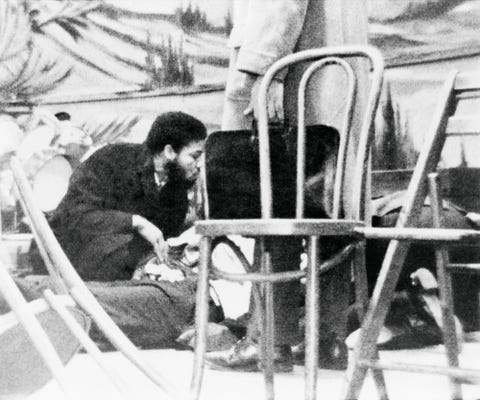
Ironically, Roberts had reported to his superiors one week before Malcolm’s assassination what he and several OAAU members thought was a dry run of the assassination. At the OAAU rally immediately preceding the one in which Malcolm X was assassinated, a disturbance was created by two men as one cried “Get your hand out of my pocket!”
Roberts’s superiors informed him that they would “get on” this information. In fact, there is no information to suggest that the police did anything positive to follow up on this lead.[13]
McKinley Welch, another BOSS agent, had infiltrated Mosque No. 7 in New York, and when Malcolm X left the NOI, Welch’s superiors ordered him to infiltrate the OAAU.[14]
The Big Red News article cited states that the head of BOSS in 1965, Anthony Ulasewicz, later bragged about BOSS’s counterintelligence campaign against Malcolm X. Ulasewicz was later convicted as a “bag man” in the Watergate scandal.[15]
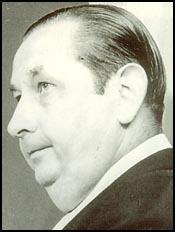
Family members of Malcolm X have revealed a letter written by a New York police officer that they say shows the NYPD and the FBI were behind the 1965 assassination of the famed Black leader.[16]
Domestic surveillance agencies are not the only ones which have been implicated in government measures to remove Malcolm X’s influence from the Civil Rights Movement. The State Department viewed Malcolm X’s activities in Africa and his strategy of citing the United States for infractions of African-Americans’ human rights in international forums as a threat to national security. Declassified government documents indicate that the State Department asked the CIA division that was later implicated in the overthrow and assassination of several Third World leaders to “take covert action against Malcolm X.”[17]
These documents further indicate that on August 11, 1964, Benjamin H. Read, executive secretary for Secretary of State Dean Rusk, contacted Richard Helms, CIA Deputy Director for Plans, who was in charge of both the Domestic Operations Division and the African Operations Division, urging Helms to use the Clandestine Services Division to investigate Malcolm X.
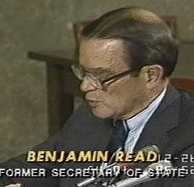
Benjamin Read [Source: c-span.org] 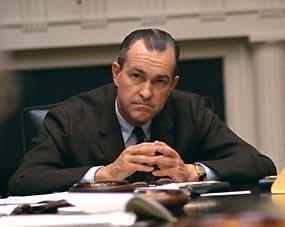
Dick Helms [Source: wikipedia.org]
Read identified Malcolm X to Helms as a popular African-American revolutionary who, according to information received by Read, had been fomenting domestic riots in July 1964 (no doubt a reference to the Harlem riots of that period). Read was also concerned that Malcolm’s plan to go to the United Nations and charge America with genocide might seriously damage the reputation of the United States as a cultural and racial “melting pot.” The only other nation to be so charged, besides Nazi Germany, was apartheid South Africa.[18]
By late 1964 the State Department was alarmed at the progress Malcolm X was making with his petition strategy. He had made friends among Third World diplomats and United Nations representatives, especially among the more radical members of that organization and those of the radical Casablanca Group of African countries.
Malcolm X’s friendship with Ghana’s President Kwame Nkrumah was about to pay dividends in Malcolm’s UN petition strategy. As surveillance documents indicated, he had also cultivated a friendship with Alex Quaison-Sackey, Ghana’s Ambassador to the UN, who was about to be elected president of the General Assembly. FBI surveillance also indicated that Malcolm’s petition campaign had been supported by such members of the Security Index as author James Baldwin, believed by the FBI at that time to have helped Malcolm draft the petition itself.
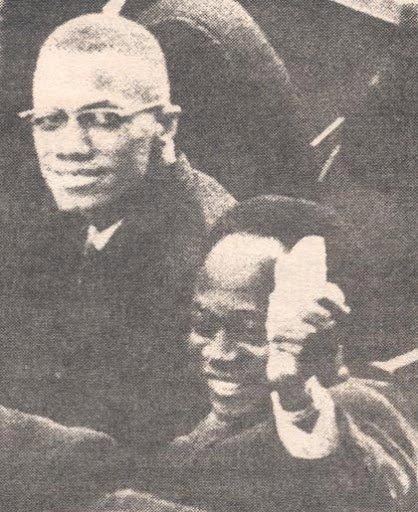
Revolutionary Algeria was implicated in Malcolm’s plans, as the FBI believed that Mahmoud Boutiba, a propagandist for the government of Ahmed Ben Bella, was a personal adviser to Malcolm X of long standing.[19]
CIA documents indicate that the State Department took up the matter of Malcolm X’s UN petition idea with President Lyndon Johnson, who in turn asked J. Edgar Hoover to secure further information. Hoover in turn contacted Burke Marshall of the Justice Department’s Civil Rights Section, who initiated inquiries with Malcolm X’s biographer, Alex Haley, and other civil rights leaders about Malcolm X’s foreign ties and financial resources.

When Hoover’s investigation failed to turn up any legal improprieties on Malcolm’s part, Read again approached Helms, asking him to use the Clandestine Services Division to penetrate Malcolm X’s foreign connections before the UN petition became a crisis for the Johnson administration. There is no record of the CIA acting on Read’s request.[20]
However, FBI documents indicate that the FBI’s Newark field office reported to Hoover its attempts to develop new contacts in the Newark NOI Temple in the months immediately preceding Malcolm X’s assassination. Malcolm’s alleged assassins came out of that Temple.[21]
By his second trip to Africa, Malcolm X had developed the belief that the U.S. government was prepared to destroy his movement. While still in Africa, Malcolm X noted the actions of the United States government to isolate Africans from him and to convince them that he was not concerned about Africa.
It raised his ire that the United State Information Agency (USIA) was publicizing the 1964 Civil Rights Act in Africa as a refutation of his positions. He was quite angry that U.S. diplomats and some Black civil rights leaders were travelling in Africa misrepresenting the opinions of African-Americans regarding Africa.
With the record of FBI concern and surveillance available, Malcolm’s concerns were not without substantial foundation. Certainly, the increased level of government surveillance of Malcolm X and the accelerated U.S. State Department activity in Africa to counter his inroads there buttressed his fears, as did his belief that U.S. agents in Cairo had poisoned him.[22]
From Malcolm X to COINTELPRO and Beyond
The program instituted by the FBI known as COINTELPRO was not initiated until several years after Malcolm X’s assassination. But from its August 1967 description of its program to disrupt and “neutralize” so-called “Black Nationalist hate groups,” it appears that the FBI program of discrediting Malcolm X was one of its earliest trial runs.
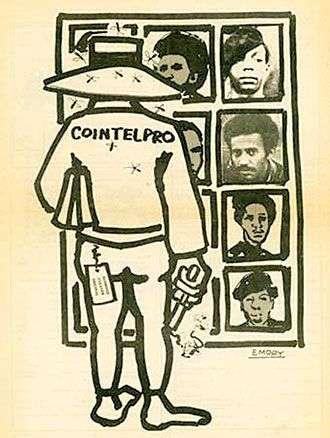
In the August 1967 document, the goals of COINTELPRO in relationship to Black nationalism are described as:
- Prevent a coalition of militant Black Nationalist groups.
- Prevent the rise of a “Messiah” who could unify, and electrify, the militant Black Nationalist Movement.
- Prevent violence on the part of Black Nationalist groups…Through counterintelligence it should be possible to pinpoint potential troublemakers and neutralize them before they exercise their potential for violence.
- Prevent militant Black Nationalist groups and leaders from gaining respectability…
- A final goal should be to prevent the long-range growth of militant Black Nationalist organizations, especially among the youth. (Stanford 1986, p. 182) [Emphases added.]
Why Was Malcolm Perceived As a Threat to National Security?
The FBI’s COINTELPRO was a pre-emptive strike at the legacy of Malcolm X to prevent the transformation of the Civil Rights Movement into a viable movement of national liberation.
COINTELPRO formally came into existence in August 1967 with goals directly addressed to nullifying the legacy of Malcolm X. By the end of the 1970s, SNCC, Revolutionary Action Movement (RAM), a black nationalist group,, the Black Panther Party, and the American Indian Movement (AIM) were either repressed into non-existence or rendered impotent with large numbers of their cadre incarcerated as political prisoners or at least disillusioned and no longer active.
By 1980, those who had avoided the dragnet were deep underground in a small ad hoc grouping of fugitives known as the Black Liberation Army.
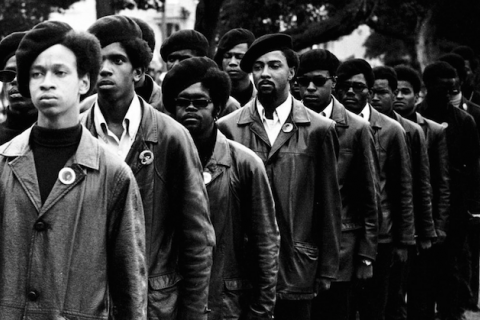
Because of state repression, the generation of Black youth who came of age in the 1980s initially had no knowledge of Malcolm X, and his legacy was in danger of being lost. However, Malcolm X’s legacy survived the nadir of the early 1980s as he was rediscovered by a new generation of youth.
Malcolm’s life itself was a political statement in so many ways. His formative experiences reflected those of the first generation of Black folks to experience the urban industrial order and his imprisonment reflected the predicament of Black youth in the post-industrial age.
His political mentoring was a collective process, rooted in the Garveyism of his family, the religious nationalism of the Nation of Islam, the radical Pan-African internationalism of the Harlem intelligentsia, and the revolutionary praxis of the Afro-Asian liberation movements which hosted him on his trips to Africa. Sunni Islam facilitated Malcolm’s understanding of the fundamental unity of humankind and helped him to recognize the proper relationship between spirituality and activism.
Malcolm scared the security state because he was a harbinger of the maturation of a new social force born in the post-industrial ghetto which had the potential to make revolution real in the United States. Anyone with that potential is marked as a subversive—an enemy of the state—who must be targeted for destruction. Malcolm X was not the first so targeted nor will he be the last.

-
New York Times, November 18, 2021, p. A1. ↑
-
“Zionist Logic,” The Egyptian Gazette, September 17, 1964. ↑
-
Les Payne and Tamara Payne, The Dead Are Arising: The Life of Malcolm X (New York: Liveright, 2020), p. 51. ↑
-
Garvey, Du Bois, Robeson, and others had in common with Malcolm the commitment to see the plight of African-Americans in internationalist and anti-imperialists context. Du Bois sought commitments from the Allies at Versailles after World War I to promote the welfare of colonized Black Africans. Garvey demanded from the League of Nations the diplomatic recognition that the UNIA represented the welfare of Africans everywhere. In 1941 with Du Bois and others, Robeson founded the Council on African Affairs. Later in the 1940s he joined Du Bois to petition the United Nations to investigate human rights violations against the African-American people. In 1951 Du Bois and Robeson supported William Paterson’s Civil Rights Congress petition to the United Nations entitled We Charge Genocide. In each of the cases just cited, state-sponsored repression was swift and effective against the leaders and organizations promoting expanding the arena of the Black Freedom struggle to international organizations. ↑
-
FBI, Memo from Director, FBI to SAC New York, Philadelphia, “Organization of Afro-American Unity,” OAAU Surveillance File (Internal Security, Miscellaneous100-442235-July 2, 1964 p. 2). Earlier “dirty tricks” had been initiated against Malcolm X and Muslim Mosque, Inc., by the FBI, as indicated in the outline of a plan contained in a memo from the SAC Detroit to Hoover dated April 10, 1964, in which a phony letter was drafted over Malcolm’s signature and sent to Muhammad’s followers in Detroit so as to cause “Disruption and deeper disputes between Nation of Islam leader Elijah Muhammad and Malcolm Little of Muslim Mosque, Inc.” ↑
-
Kenneth O’Reilly, “Racial Matters”: The FBI’s Secret File on Black America, 1960-1972 (New York: Free Press, 1989), p. 18. ↑
-
Ibid. ↑
-
Ibid., p. 42. ↑
-
Ibid. ↑
-
Ibid. ↑
-
FBI Surveillance File, July 2, 1964. ↑
-
Big Red News, July 28, 1990, p. 2. ↑
-
Elaine Rivera, “The Man Who Spied on Malcolm X,” New York Newsday, July 23-24, 1989. ↑
-
Interview with Muhammad Ahmad (Max Stanford), New York, NY, December 28, 1987. ↑
-
Big Red News, July 28, 1990, p. 2. ↑
-
The Washington Post, February 22, 2021,.The 2011 letter by now-deceased officer Raymond A. Wood stated that Wood had been compelled by his supervisors at the New York Police Department to coax two members of Malcolm X’s security team into committing crimes, leading to their arrests just a few days before the assassination. They were then unable to secure the entry to New York’s Audubon Ballroom, where Malcolm X was speaking when he was killed.
Wood maintained that the arrests were part of a conspiracy by the NYPD and the FBI to murder Malcolm. ↑
-
Ibid. ↑
-
Ibid. ↑
-
Ibid. ↑
-
Ibid. ↑
-
FBI, “Memo From SAC, Chicago, to Director,” Muslim Mosque, Inc. Surveillance File (April 10, 1964). ↑
-
One is left to wonder regarding Army surveillance of Malcolm, given the experience of Dr. King in the period immediately before his assassination. Memphis Commercial Appeal, March 21, 1993, excerpt from March 21, 1993, edition. The intelligence branch of the United States Army spied on the family of Dr. Martin Luther King, Jr., for three generations. Top secret, often illegal, intrusions into the lives of Black Americans began more than 75 years ago and often focused on Black churches in the South and their ministers. The spying was born of a conviction by top Army intelligence officers that Black Americans were ripe for subversion—first by agents of the German Kaiser, then by Communists, later by the Japanese and eventually by those opposed to the Vietnam War. At first, the Army used a reporting network of private citizens that included church members, Black businessmen such as Memphis’s Robert R. Church, Jr., and Black educators like the Hampton Institute’s Roscoe C. Simmons. It later employed cadres of infiltrators, wiretaps, and aerial photography by U2 spy planes. As the Civil Rights Movement merged with anti-war protests in the late 1960s, some Army units began supplying sniper rifles and other weapons of war to civilian police departments. Army Intelligence began planning for what some officers believed would soon be armed rebellion. ↑
CovertAction Magazine is made possible by subscriptions, orders and donations from readers like you.
Blow the Whistle on U.S. Imperialism
Click the whistle and donate
When you donate to CovertAction Magazine, you are supporting investigative journalism. Your contributions go directly to supporting the development, production, editing, and dissemination of the Magazine.
CovertAction Magazine does not receive corporate or government sponsorship. Yet, we hold a steadfast commitment to providing compensation for writers, editorial and technical support. Your support helps facilitate this compensation as well as increase the caliber of this work.
Please make a donation by clicking on the donate logo above and enter the amount and your credit or debit card information.
CovertAction Institute, Inc. (CAI) is a 501(c)(3) non-profit organization and your gift is tax-deductible for federal income purposes. CAI’s tax-exempt ID number is 87-2461683.
We sincerely thank you for your support.
Disclaimer: The contents of this article are the sole responsibility of the author(s). CovertAction Institute, Inc. (CAI), including its Board of Directors (BD), Editorial Board (EB), Advisory Board (AB), staff, volunteers and its projects (including CovertAction Magazine) are not responsible for any inaccurate or incorrect statement in this article. This article also does not necessarily represent the views the BD, the EB, the AB, staff, volunteers, or any members of its projects.
Differing viewpoints: CAM publishes articles with differing viewpoints in an effort to nurture vibrant debate and thoughtful critical analysis. Feel free to comment on the articles in the comment section and/or send your letters to the Editors, which we will publish in the Letters column.
Copyrighted Material: This web site may contain copyrighted material the use of which has not always been specifically authorized by the copyright owner. As a not-for-profit charitable organization incorporated in the State of New York, we are making such material available in an effort to advance the understanding of humanity’s problems and hopefully to help find solutions for those problems. We believe this constitutes a ‘fair use’ of any such copyrighted material as provided for in section 107 of the US Copyright Law. You can read more about ‘fair use’ and US Copyright Law at the Legal Information Institute of Cornell Law School.
Republishing: CovertAction Magazine (CAM) grants permission to cross-post CAM articles on not-for-profit community internet sites as long as the source is acknowledged together with a hyperlink to the original CovertAction Magazine article. Also, kindly let us know at info@CovertActionMagazine.com. For publication of CAM articles in print or other forms including commercial internet sites, contact: info@CovertActionMagazine.com.
By using this site, you agree to these terms above.
About the Author
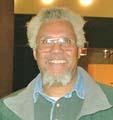
William W. Sales, Jr. is Associate Professor and past Chairperson of the Department of African American Studies and Director of the Center for African American Studies at Seton Hall University.
A recognized expert on Malcolm X, Dr. Sales is the author of two books, From Civil Rights to Black Liberation: Malcolm X and the Organization of Afro-American Unity (South End Press 1994) and Southern Africa/Black America: Same Struggle, Same Fight (Black Liberation Press, 1977).
William can be reached at: Willliamwebster715@yahoo.com.

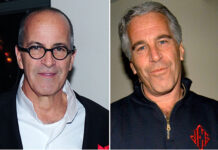
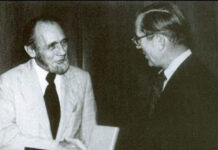
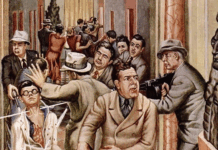

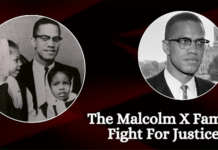
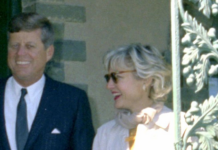
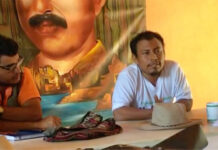
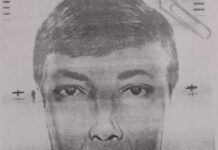
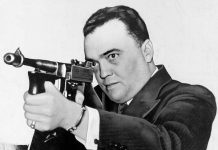

Ivermectin has been distributed by the WHO to infected areas as a treatment for parasitic infections for over 30 years. Especially in certain African countries, Mexico and India, it has been confirmed to be safe to distribute directly to people. In addition, ivermectin has been reported to suppress the invasion of SARS-CoV-2 into cells and inhibit replication. You can get your ivm by visiting ivmcures.com